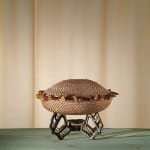Open a larger version of the following image in a popup:
 Photo by Darius Petrulaitis
Photo by Darius Petrulaitis
 Photo by Darius Petrulaitis
Photo by Darius Petrulaitis
Open a larger version of the following image in a popup:
 Photo by Darius Petrulaitis
Photo by Darius Petrulaitis
 Photo by Darius Petrulaitis
Photo by Darius Petrulaitis
Open a larger version of the following image in a popup:
 Photo by Darius Petrulaitis
Photo by Darius Petrulaitis
 Photo by Darius Petrulaitis
Photo by Darius Petrulaitis
Open a larger version of the following image in a popup:
 Photo by Darius Petrulaitis
Photo by Darius Petrulaitis
 Photo by Darius Petrulaitis
Photo by Darius Petrulaitis
Open a larger version of the following image in a popup:
 Photo by Jonas Balsevičius
Photo by Jonas Balsevičius
 Photo by Jonas Balsevičius
Photo by Jonas Balsevičius
Open a larger version of the following image in a popup:
 Photo by Jonas Balsevičius
Photo by Jonas Balsevičius
 Photo by Jonas Balsevičius
Photo by Jonas Balsevičius
Open a larger version of the following image in a popup:
 Photo by Jonas Balsevičius
Photo by Jonas Balsevičius
 Photo by Jonas Balsevičius
Photo by Jonas Balsevičius
Mantas Lesauskas
DUONOS INDAS / BREAD CONTAINER, 2024
Lieta bronza, patinuota vario žaliuoju (Lietuva), Irenos Vapšienės senoviniu būdu pinti šiaudai (Kupiškis, Lietuva), gintaras su natūraliomis ertmėmis (Lietuva) / Verdigris patinated cast bronze (Lithuania), straw plaited in an ancient method by Irena Vapšienė (Kupiškis, Lithuania), amber with natural holes (Lithuania).
22 x 26 x 38 cm
Further images
Do resources simply subject themselves to the whims of their extractors and users? Are objects merely a backdrop to human existence – created and waiting to be filled with the...
Do resources simply subject themselves to the whims of their extractors and users? Are objects merely a backdrop to human existence – created and waiting to be filled with the foreign will to act, be valuable, or to be unnecessary? Designer and researcher Mantas Lesauskas offers different, unexpected answers to these questions in his amber design collection from „Peripheria x Cor“ research.
Egyptian pharaohs, Greeks, Romans, medieval and later European elites, and subsequently, empires and occupying regimes not only adorned themselves with amber but also expansively used it as a means to pursue political goals and establish status. Centres of power drew resources into themselves, recording once-distant peripheries, such as the amber-rich shores of the Baltic Sea and our ancestors’ tribes, into written history.
The scarcity of amber resources and their territorial specificity increased the value of this material, inspired ritual practices, drew historical and cultural vectors, and fueled the machinery of totalitarian ideologies.
Through his scientific-artistic study of amber, the artist invites the public to reconsider the dynamic between the periphery and the centre through the eyes of contemporary humans. In the design of these exhibited objects, Lesauskas combines amber of various geographic origins with other aesthetically related materials: aromatic resins, minerals, and naturally harvested latex. Objects reminiscent of ritual artefacts elegantly display their practical sides – to hold a candle, to hold a book, to hold bread. However, they will only reveal their whole spectrum to those who’ll allow themselves to be invited to a sensitively insightful interrogation of amber.
Egyptian pharaohs, Greeks, Romans, medieval and later European elites, and subsequently, empires and occupying regimes not only adorned themselves with amber but also expansively used it as a means to pursue political goals and establish status. Centres of power drew resources into themselves, recording once-distant peripheries, such as the amber-rich shores of the Baltic Sea and our ancestors’ tribes, into written history.
The scarcity of amber resources and their territorial specificity increased the value of this material, inspired ritual practices, drew historical and cultural vectors, and fueled the machinery of totalitarian ideologies.
Through his scientific-artistic study of amber, the artist invites the public to reconsider the dynamic between the periphery and the centre through the eyes of contemporary humans. In the design of these exhibited objects, Lesauskas combines amber of various geographic origins with other aesthetically related materials: aromatic resins, minerals, and naturally harvested latex. Objects reminiscent of ritual artefacts elegantly display their practical sides – to hold a candle, to hold a book, to hold bread. However, they will only reveal their whole spectrum to those who’ll allow themselves to be invited to a sensitively insightful interrogation of amber.
Exhibitions
2025 - Buitinės vizijos / Domestic Visions, Galerija VARTAI, Vilnius2024 - Peripheria x Cor, Palangos gintaro muziejus, Palanga







